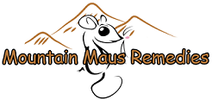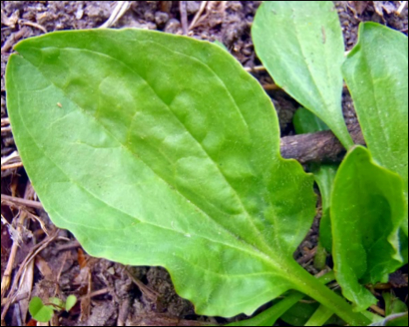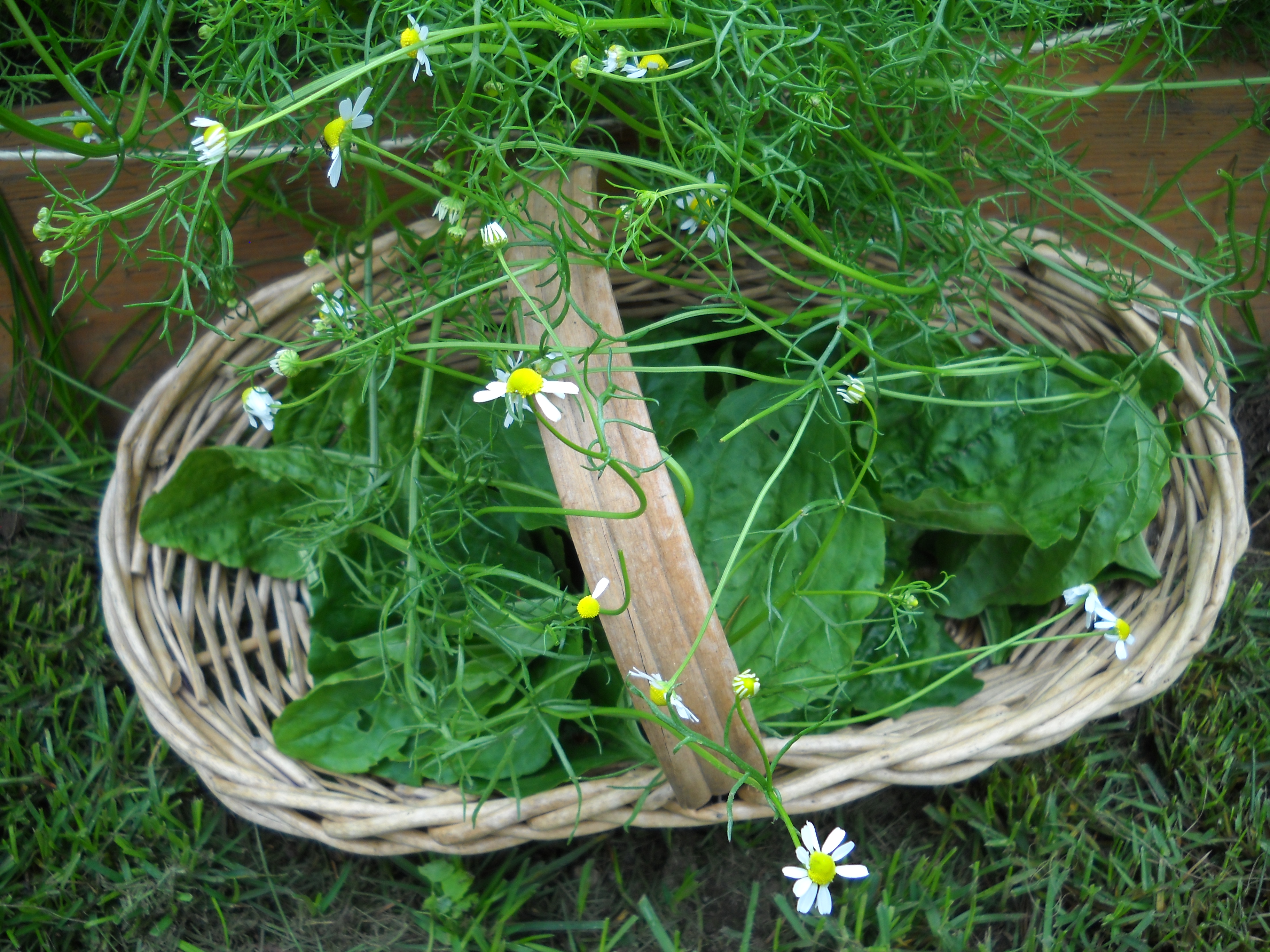 Loading... Please wait...
Loading... Please wait...Plantain – An awesome medicinal weed.
Posted by Patricia Delgado on 21st Jun 2016
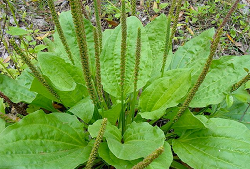
I know when my husband Jim first heard me talking about going to pick plantain, he thought I had really lost it! He had been hunting and trapping all over the land where I go to harvest wild herbs and not once had he seen a plantain banana tree! I smiled and lovingly explained to him about Plantago, aka plantain, and reminded him of what I use to take care of my stinging nettle burns when I forget my gloves! So this article is about plantain the awesome medicinal weed, not the yummy semi-sweet banana!
Plantains are
found all over the world and really thrive and are most common in wet
environments, which is why they are probably so plentiful here in
Medicinal uses for plantain are almost endless. Plantains plethora of active constituents are anti-bacterial, anti-inflammatory, analgesic, antitoxic, and astringent just to name a few. It contains the glycoside Aucubin which is a powerful anti-toxin as reported in the Journal of Toxicology. When used in tincture form along with white oak bark (quercus alba) it helps aid in various dental ailments and a straight plantain tincture will also work for gastritis and cystitis and aid in cooling the inflammation.
It is known to have diuretic properties, can be used as a laxative, and the plant extract has haemostatic qualities (aids in blood clotting). It may be used where the kidneys and liver have been stressed by the use of pharmaceutical drugs or heavy metal toxicity. I do not have much experience with this use but if given the chance, I would try plantain since it’s such a readily available natural herb and knowing that it contains Aucubin. There is an ongoing study and current medical evidence that confirms using plantain as an alternative medicine for respiratory issues (ie asthma, bronchitis, etc) rheumatism, bladder problems and there is evidence that Plantains active constituents have affects on lowering blood sugar.
Plantain can also be used for many skin issues such as eczema, impetigo, rashes & reactions to poison ivy/oak, not to mention stings from the stinging nettle! With its anti-inflammatory qualities it can be used for all types of bug bites and stings including bee stings. Plantain can be used as an astringent, and using a hot poultice of Plantain by placing it on cuts and wounds will draw out thorns, slivers and inflammation. It is a great addition to your shampoo routine to help heal dandruff & other scalp issues. Plantain contains natural allantoin which has the desirable effect of promoting healthy skin, stimulating new skin cells & healthy tissue growth.
Oh and let’s not forget the seeds of the Plantain which are called psyllium seed. Psyllium seeds contain up to 30% mucilage (ie Metamucil®) so not only a good source of fiber for bulk in your diet, but they are also a vermifuge, which is a nice way of saying it can expel parasitic worms out of the intestines and pass them through the bowels. But it doesn’t stop there…the seeds can be dried and ground into a meal or flour for making bread or pancakes - an excellent way to save money on groceries and fuel your body with quality nutrients. Plantain is rich in vitamin B1 and riboflavin and also contains magnesium, vitamin A, vitamin C, and vitamin K.
How can I identify them in the wild? They are a low profile plant, almost flat to the ground with stocks that sprout up when they are ready to flower and go to seed. They have a rosette of large, broad oval shaped leaves that are a dark green in color and are 4”-7” long, smooth, fibrous with 3-7 ribbed veins which connect to a long leaf stalk which is slightly reddish in color at the base. The flower stalks are erect and slender and are a densely flowered spike. Flowers are a tiny bell shape and brownish in color that bloom for most of the summer. This is what Broad Leaf Plantain looks like.
For harvesting, the first thing to do is to determine if you have wild plantain to pick in your yard or near by, it is best to not pick plantain from the sides of the roads as these will be full of dust, dirt, toxins & other yucky things.
Now let’s start harvesting: Take a basket or clean bucket with you so you can pick to your hearts content, just remember the rules for foraging from the first issue of BE Life in the Stinging Nettle article! You can use your hands, but I prefer to use my scissors. I snip them just above the stems, the new tender stems I do not mind though if I do snip them by mistake. I pick the newer leaves for eating & use the older ones for my natural remedies. I typically harvest leaves in the spring, and go again when the flower stalks are up, harvesting older leaves and the flower stalks to dry for later herbal remedy use.
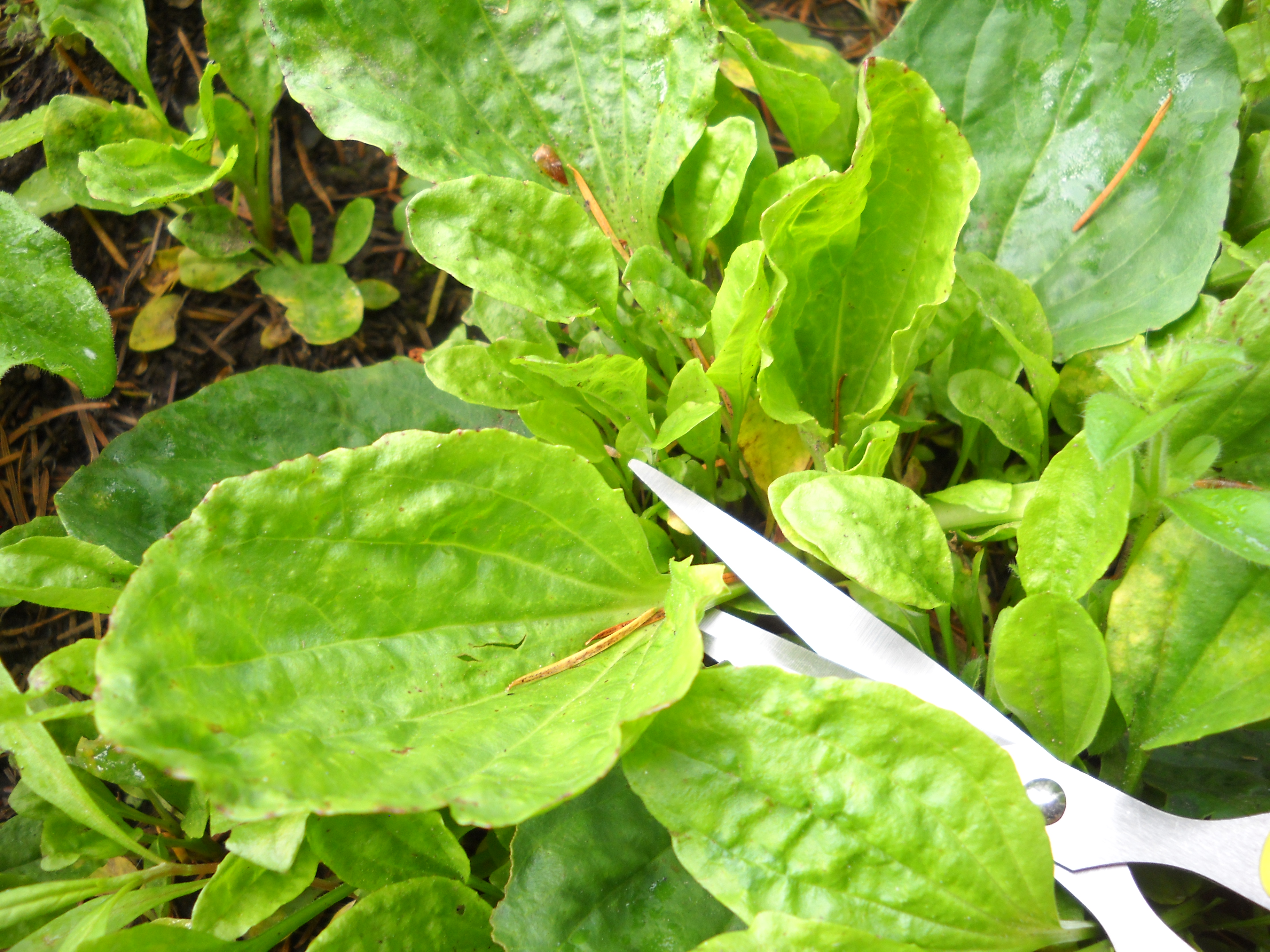
Next you want to wash your leaves. No matter what way you are going to use the plantain greens the first order of business is to wash them. Most websites state to just swish in cool water, but I know we have our ducks and chickens whom every now and then escape their habitat area and waddle and cluck on or near my plantain so you never know what is out there doing who knows what to wild plantain! So I prefer to wash them to remove germs & bacteria. A great basic wash would be to add your plantain leaves to a bowl or the sink, add enough cool water to get all leaves wet & be able to swish them, add about 1/4 to 1/2 cup apple cider vinegar. Swish the leaves with your hand & let sit about 10 minutes swishing them another time or 2, then simply drain them & rinse if desired. Or instead of ACV you could add a couple tbsp. of baking soda or salt.
It's  using Plantain Leaves
using Plantain Leaves
Chewing it: It is said that one of the best ways to use plantain for bites, stings, wounds & burns is to put a leaf in your mouth, chew it to mush & apply to the affected area, this is known as a poultice. So if you are outside & get stung you have a fast way for relief. It works great when you brush against the stinging nettles you are harvesting!
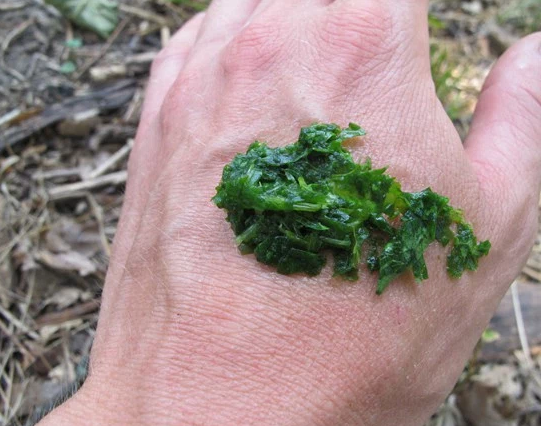

Healing salve: In large non-reactive pan place one pound of cut up fresh plantain leaves, 1 cup of olive oil, raw coconut oil or pure lard. Put lid on the pot, cook on low. Cook until all the leaves are mush & the oil has turned green. Strain before oil cools too much. Store in airtight container, then use on bug bites/stings, rashes & other skin conditions, wounds, sores, sunburns & burns, as a moisturizing cream, night/wrinkle cream & as a chest rub. Optional: add essential oils after cooled.
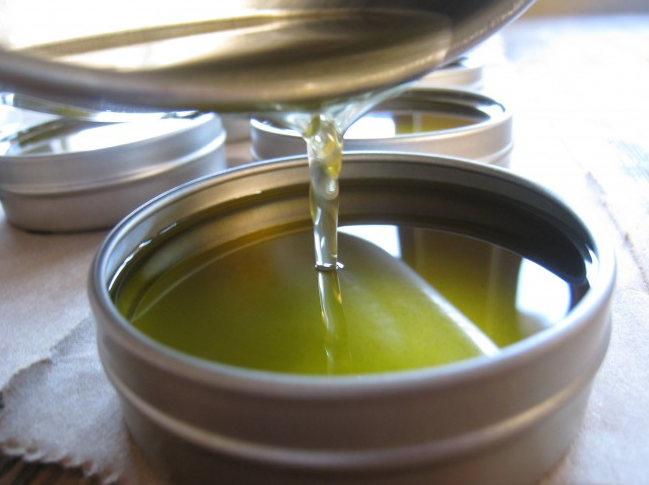
Plantain Tincture: Fill a jar with cut up fresh plantain leaves, leaving about 1 inch at the top. Completely fill the jar with vodka. Put the lid on & shake. Label & date & put in a dark cupboard for 6 weeks shaking every few days. This is a medicine with the power of plantain, & it can last for 5-7 years. This tincture is safe for internal & external use. Directions for use: 10 drops added under your tongue & held there 20 to 45 seconds, then swish in mouth & swallow, or you could add it to a glass of pure water & sip making sure to swish around in mouth before swallowing. Aids in: drawing out toxins, infections, phlegm & mucus out of the mouth, sinuses & body. You can make a similar tincture using rubbing alcohol, but it can only be used for external use.
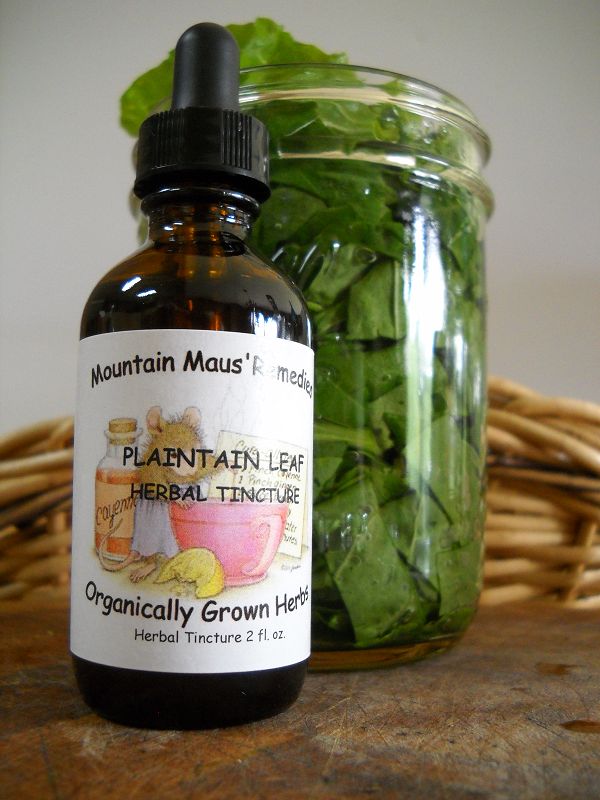
Other great ways to use plantain is to infuse it in vinegar, oil, honey and even water to be able to use its benefits in many different ways. For cooking with Plantain leaves and making bread with psyllium seed you can visit my recipes page here.
Now its time to head back out to our outdoor medicine cabinet and grocery store, which by the way, is all stocked by God! Until next time, happy harvesting!
